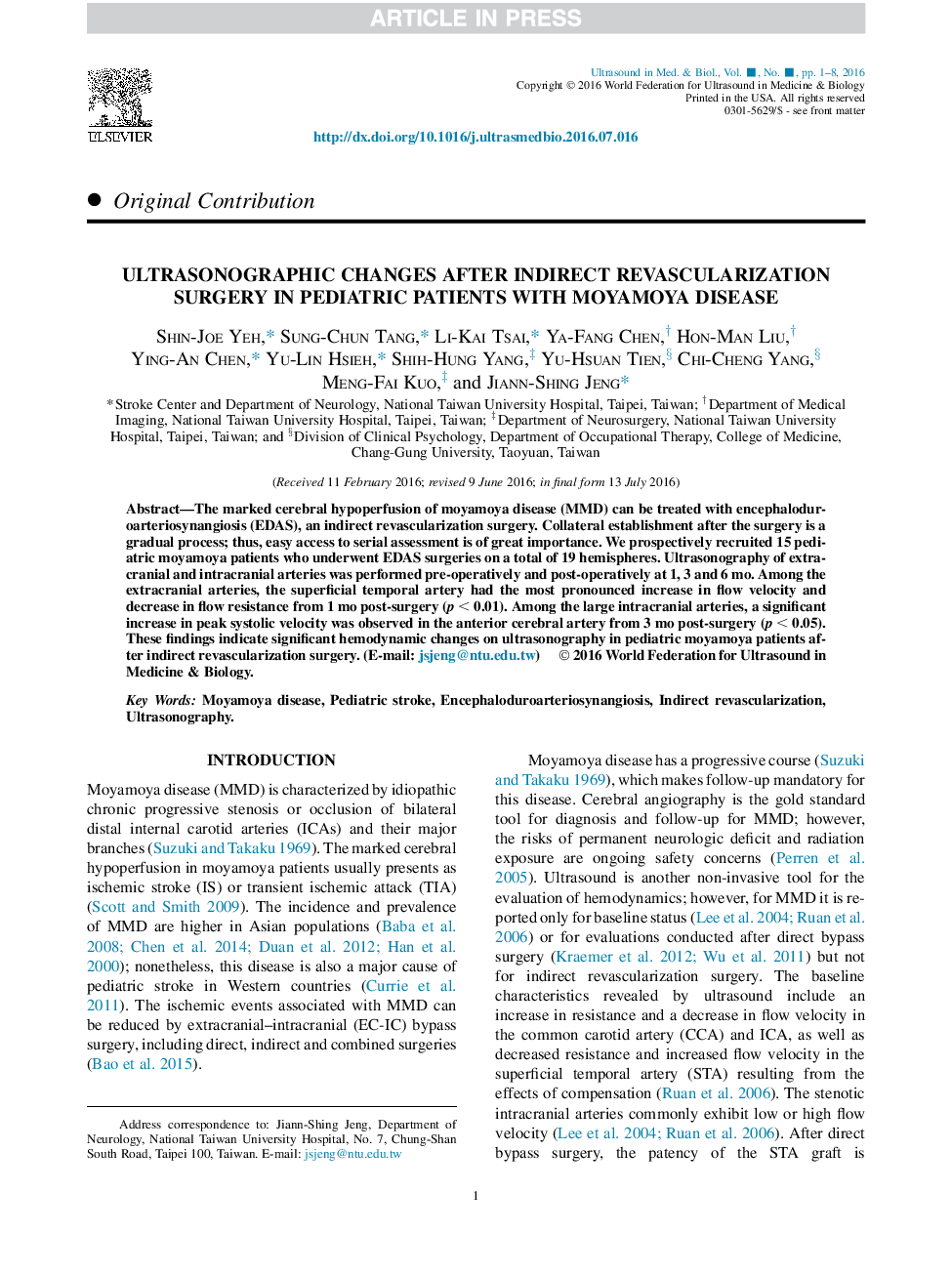| Article ID | Journal | Published Year | Pages | File Type |
|---|---|---|---|---|
| 5485779 | Ultrasound in Medicine & Biology | 2016 | 8 Pages |
Abstract
The marked cerebral hypoperfusion of moyamoya disease (MMD) can be treated with encephaloduroarteriosynangiosis (EDAS), an indirect revascularization surgery. Collateral establishment after the surgery is a gradual process; thus, easy access to serial assessment is of great importance. We prospectively recruited 15 pediatric moyamoya patients who underwent EDAS surgeries on a total of 19 hemispheres. Ultrasonography of extracranial and intracranial arteries was performed pre-operatively and post-operatively at 1, 3 and 6 mo. Among the extracranial arteries, the superficial temporal artery had the most pronounced increase in flow velocity and decrease in flow resistance from 1 mo post-surgery (p < 0.01). Among the large intracranial arteries, a significant increase in peak systolic velocity was observed in the anterior cerebral artery from 3 mo post-surgery (p < 0.05). These findings indicate significant hemodynamic changes on ultrasonography in pediatric moyamoya patients after indirect revascularization surgery.
Related Topics
Physical Sciences and Engineering
Physics and Astronomy
Acoustics and Ultrasonics
Authors
Shin-Joe Yeh, Sung-Chun Tang, Li-Kai Tsai, Ya-Fang Chen, Hon-Man Liu, Ying-An Chen, Yu-Lin Hsieh, Shih-Hung Yang, Yu-Hsuan Tien, Chi-Cheng Yang, Meng-Fai Kuo, Jiann-Shing Jeng,
